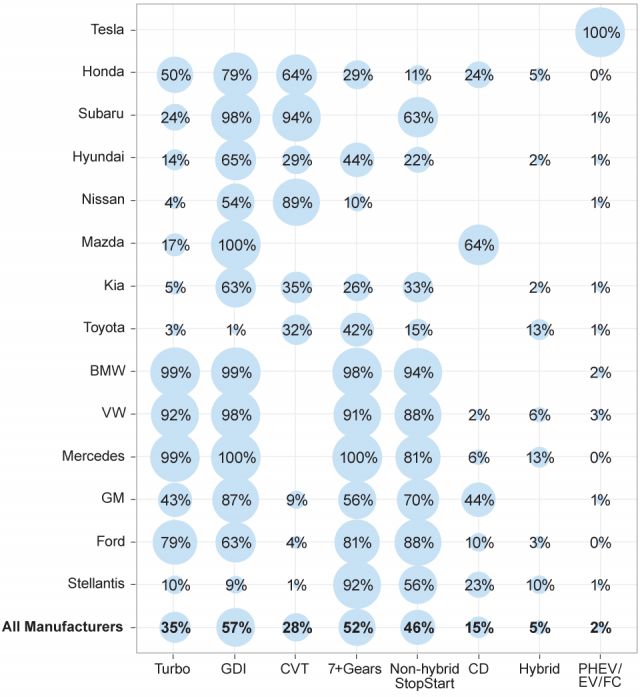In the on-going match between podcasting giant Joe Rogan and the scientific consensus, popularity is a dangerous fixer

Jonathan Jarry M.Sc. | 20 Nov 2021
“Lot of times, we’re drinking or we’re high, you know, and I say stupid shit.” Coming from a teenager, this statement may invoke memories of your own adolescence. But carried by the voice of then-53-year-old Joe Rogan defending his off-the-cuff, on-the-air remarks about COVID vaccines in young adults, it reeks of arrested development.
Rogan, whose CV includes the television shows NewsRadio and Fear Factor, is, by his own description, a “cage-fighting commentator” and a “dirty stand-up comedian.” But his influence on the health landscape can be felt the most through The Joe Rogan Experience, his long-form interview podcast now exclusively available on Spotify thanks to a $100 million deal.
And that influence is considerable given the scale of Rogan’s podcasting platform, which a few numbers can contextualize.
1920 and counting. That’s the number of episodes the show has released since its beginning eleven years ago, and that number goes up by three or four each week. The average length of these episodes is roughly 2.5 hours. It would take close to seven sleepless months to listen to them all.
28.7 million. That’s the reported number of views on the most recent show Rogan hosted with conspiracy theorist Alex Jones.
200 million. That’s the number of monthly downloads the show was asserting in 2019, before the move to Spotify. For this same year, the episodes still left on YouTube all have millions of views each, and they generated additional clicks through audio podcasting apps. This regularly put Rogan’s show above the total average prime time audiences for Fox News (2.5 million viewers), MSNBC (1.8 million viewers), and CNN (972,000 viewers). There is indirect evidence that his audience has shrunk since moving behind the great Spotify wall, but his reach still appears to be immense.
The Joe Rogan Experience often feels like being a fly on the wall in a teenager’s basement apartment. The parents are upstairs, watching Carlson, Maddow or Cooper, and we’re downstairs, listening in on private conversations that reveal mind-blowing facts about the world. These conversations, serpentine and unpredictable, fill the air of Rogan’s online and informal equivalent of a gentlemen’s club. Indeed, a whopping 88% of Rogan’s guests are men, as well as 71% of his listenership according to a MediaMonitors survey in 2020. The average age of his listeners according to the same survey is 24.
Rogan has an undeniable appeal to young men who are trying opinions and ideologies on for size. To them, social media may appear superficial and political commentators on American television may seem hopelessly biased. Rogan comes across as a neutral, curious, and relatable host sharing deep, unfiltered conversations with experts and celebrities. No artifice, no sound bites. Just Joe and his inquisitiveness.
Many of his shows feature mixed martial artists and comedians but others focus on health, and that is where his apparent neutrality crumbles and his inclinations become hazardous. Speaking to comedian Bill Burr about COVID-19 while smoking cigars, Rogan said, half-humorously, half-seriously, that wearing a mask was “for b*tches, it just is.” Testosterone is not in short supply on The Joe Rogan Experience. As Matthew Remski, co-host of the Conspirituality podcast, wrote about bro science, “in the rugged country of bros, there are no communities, but rather collections of homogenous, self-contained, self-responsible individuals.” And the gentlemen’s club of Rogan’s podcast has had a disreputable clientele of so-called “self-responsible individuals.”
Rogan platformed Dr. Andrew Weil, one of the kings of promoting unproven and disproven pseudomedical remedies, who ridiculed the idea that placebo effects needed to be ruled out from studies. For the record, they have to be subtracted, though, because they represent non-specific effects of everything but the intervention. However, Weil claimed enthusiastically that they should be ruled in because “that’s the meat of medicine, that’s pure healing from within.” This shows a stunning misunderstanding of scientific research.
Rogan also hosted Bret Weinstein, a former biology professor turned podcasting conspiracy theorist, and Dr. Pierre Kory, a critical care physician, for an emergency broadcast on the use of ivermectin for COVID-19 during which the taking of this antiparasitic drug was said to yield “near-perfect protection” against the disease. This is not the case.
Abigail Shrier was welcomed on the show to talk about her provocatively titled book, Irreversible Damage: The Transgender Craze Seducing Our Daughters. The book promotes a made-up diagnosis, “rapid-onset gender dysphoria,” to breathe new life into the cyclical moral panic surrounding children. The website Science-Based Medicine, following the publication of an endorsement of the book by one of its editors, posted a number of articles addressing the multiple inaccuracies of the book, written by actual experts. Meanwhile, Rogan portrayed the care given to transgender people as “stepping in to a developing baby that’s only been alive for six years and shooting chemicals into its body […] to hormonally interact with their body in some sort of a random, Dr. Frankenstein sort of way.” To be this clueless beggars belief.
Being interested in nutrition, Rogan has also aired long conversations with people on the topic of diets. Perhaps the strangest of all was with Mikhaila Peterson, who is not a dietitian, claiming that a diet consisting exclusively of beef and salt cured her arthritis. There are many, many problems with this “carnivore diet,” and it baffles me that Peterson is someone Rogan would look to for insight on what to eat.
And then there’s Alex Jones. The shock jock has embraced every grand conspiracy theory invented by humanity, from the existence of a New World Order to “Hurricane Katrina was a test of FEMA concentration camps.” He was sued for defamation by the families of ten people killed in the Sandy Hook school mass shooting, as he had repeatedly alleged that the massacre was a false flag operation and that the victims’ families were actors. He recently lost all of these defamation suits. Jones has been Rogan’s guest four times.
Rogan does not necessarily endorse what his guests say—he’s just asking questions—but he bullhorns their pseudoscientific and conspiracy-laden views to millions of audience members. To Alex Jones, he said, “it’s f---ing dangerous to censor you.” He subsumes calls for responsible platforming under a general defence of free speech. “Censoring is bad,” goes the thinking, “therefore the best thing to do is to platform as many iconoclasts as possible, to make sure their claims reach the ears of millions of people who can then decide for themselves where the truth lies.” Which leads to Alex Jones telling tens of millions of people that “they” are coming to your house demanding a COVID test and if you don’t agree, “they” will arrest you. And although Rogan often pushes Jones for evidence on his claims, he has still platformed a paranoid lunatic (or a man who acts in this manner for profits) who once said that Hillary Clinton has personally murdered children through a pedophilia ring found in the non-existent basement of a pizza joint.
A colossal reach like Rogan’s requires maturity, especially in the middle of an infodemic. But in clinging to the teenage desire to hear things that’ll blow your mind, the podcaster with a golden megaphone broadcasts lies, fantasies, and bad medical advice.
Living on the cutting edge
Joe Rogan’s attraction to pseudoscience wasn’t born with COVID. Like so many people passionate about fitness, Rogan is always looking for an edge. He has promoted cryotherapy in the past, even posting a photo of himself inside a cryochamber on his personal Instagram account which has 13.5 million followers. The U.S. Food and Drug Administration has said this therapy has “very little evidence about its safety or effectiveness.” While the promoted claims may look scientific, they are based on a lot of hot air.
Rogan has also repeatedly publicized stem cell injections as miraculous treatments. They apparently completely healed his rotator cuff tear, and Rogan had Mel Gibson on to talk about how a stem cell treatment in Panama saved his 92-year-old father’s life, improving his thinking, his eyesight, “and other stuff […] that he would hate for me to talk about!” Anecdotes are not hard evidence, but the confessional atmosphere of the podcast gives these medical claims the weight of cutting-edge secrets. Make no mistake: stem cell research holds tremendous potential, but the current industry of stem cell tourism (and the growing creep of stem cell staycations) is built on scienceploitation. Its claims are unsubstantiated and the harms are very real.
The air of secrecy that surrounds these therapies—discovered through a personal network of would-be pioneers that Rogan’s status has allowed him to build—is also seen in the conspiracy theories he has embraced in the past. Moon hoaxes and Roswell aliens were frequent fodder in the early days of his podcast. One of his favourite guests is Graham Hancock, with seven appearances on the show, who wrote one of Rogan’s favourite books, Fingerprints of the Gods. In it, Hancock theorizes that an advanced civilization forgotten by historians existed in our distant past and was nearly wiped out, with survivors bringing their arcane knowledge to Egypt and the Americas. This kind of pseudoarchaeological hypothesis pushes all the right buttons: it’s revolutionary knowledge heretofore hidden from view and uncovered by a Galileo figure. This is heroin for the adolescent mind.
With COVID, Rogan’s habit for embracing pseudoscience and the rugged individualism that often puts him at odds with public health landed him in hot water with the media. COVID is no worse than the flu, he’d say. Ivermectin is a perfect storm against COVID: “extremely effective, extremely cheap, and generic.” And, infamously, if you’re a healthy 21-year-old, you don’t need to get the COVID vaccine. When confronted, Rogan simply says, “I’m not a doctor, I’m a f---ing moron.” But he’s a moron with influence.
A survey commissioned by The Washington Post revealed that Rogan’s listeners were significantly less likely to intend to vaccinate than those who do not regularly listen, with an 18% lower intent in February 2021. It would be foolish to infer that Rogan single-handedly swayed these people: many are drawn to him because of his libertarian tendencies and his suspicion of public health recommendations. But given the magnitude of his audience and its young average age, it would be equally foolish to pretend Rogan’s misinformed opinions have no effect. When quarterback Aaron Rodgers caught the disease, he took a cocktail of remedies, including ivermectin. Whose advice was he following? Joe Rogan’s.
Spotify, the company that exclusively platforms his podcast, says it will not allow “any inaccurate content on its podcasting platform,” which is ludicrous. First, audio content is notoriously challenging to moderate. Second, Rogan has proved to be too much of a draw for Spotify to risk their business relationship. Australian misinformer Pete Evans had his podcast removed by Spotify for “dangerous, false, deceptive, and misleading content about COVID-19.” Even though the same label could be applied to Rogan’s show, similar action has not been taken. Spotify did remove some episodes from its catalogue, including those with comedian Chris D’Elia (accused of soliciting nude photos from teenagers) and with far-right figures. But the COVID misinformation remains on the playlist for now.
The cycle of excitement
Whenever Joe Rogan is trending on social media, Dr. Danielle Belardo, a cardiologist, tweets out, “Joe Rogan is goop for men.” She is referring to Gwyneth Paltrow’s wellness emporium, propped up by a foundation of pseudoscience. Indeed, Joe Rogan is a walking incubator for supplements. A fansite keeping close tabs on what the podcaster says reports that, during the pandemic, Rogan received weekly intravenous drips of vitamin C, zinc, glutathione, and NAD. At 40, he started testosterone replacement therapy. The site also lists a preposterous list of supplements Rogan has at least experimented with, from glucosamine to cannabidiol tincture, from quercetin to nootropics, including Onnit’s Alpha Brain, which the company started making it at Rogan’s suggestion and which he endorses. He says the supplement, which contains ingredients meant to increase levels of the neurotransmitter acetylcholine, makes him mentally sharper. But while supplements can treat deficiencies, they don’t grant superpowers if you take more of them. Are the amounts in Alpha Brain enough to do anything? How do they interact together? The usual skepticism of the supplement industry should apply here. We are, after all, in the same territory as Alex Jones’ own Brain Force Plus.
There is another angle to the Rogan-Paltrow comparison: both hint at wealth being an important gateway to health. Rogan’s stack of supplements costs money. So does the private gym furnished with high-quality fitness and combat sport equipment. The Iron Neck, the glute-ham developer, the iron kettlebells with the ape faces sculpted into them, discussed on the air and Instagrammed for millions to salivate over, paint a familiar picture of aspirational wellness. Health is a personal choice that a multimillionaire can easily afford. Masks, after all, are for b*tches. But the metaphorical mask does slip when, despite a pantry full of supplements, Rogan did get COVID and did not trust his pantry to save him. He reached for the kitchen sink: monoclonal antibodies, ivermectin, the antibiotic azithromycin, prednisone, and extra drips of NAD and vitamins. Everything money could conjure up was used in the wake of, as he put it, “one bad day.”
Despite many of his critics calling Rogan a meathead, he’s not dumb. But his thinking is biased in ways that make pseudoscience look titillating. Faced with a new supplement or new intervention, his brain seems to lean on the same shortcuts. Is this new? Does it challenge the status quo? Has it not yet been endorsed by the medical establishment? Does it feel objective to me and well-reasoned? Is it recommended by a friend of mine, possibly an expert I’ve had on the show who’s cutting-edge? And are they being censored or criticized in some way? Consensus is not sexy when you’re attracted to innovation. Rogan wants secret knowledge from his rogue experts who can tell him what looks promising in the lab. He wants to beat the lab mice to it. And he’ll bank on his personal experience to decide if it works or not, even when he admits that he does so many things to improve his health, it’s hard to know if the umpteenth addition to the lot made a difference. But no worries because the cycle of excitement gets to start again with another shiny thing.
In the background of all this is an anti-establishment sentiment. Mainstream medicine is boring and too slow to pick up on novelty, is the message. The mainstream media attempts to control the narrative with lies. CNN, in fact, did lie about Rogan by claiming repeatedly that he had taken a horse dewormer. Ivermectin can be used to deworm horses but it can also be used in humans, and Rogan said he got human-grade ivermectin from a medical doctor, not a vet. What CNN did affects its credibility.
But you cannot sow distrust in mainstream establishments and not expect people to seek out an alternative. But is the alternative better? If the pharmaceutical industry puts money ahead of patients, any off-patent drug pushed by an even-keeled contrarian is a cure-all. If CNN is found to slant its coverage, Rogan’s audience should watch Tim Pool, an independent pundit with a heavily biased, faux-journalistic body of work who recently hosted both Rogan and Alex Jones. According to Rogan, the mainstream media is “a left-wing cult.” Are we supposed to turn a blind eye to the numerous problems with the alternatives because the mainstream sometimes misses the mark?
Rogan wants us to drift away from “the establishment” and listen to the siren song of its “freedom”-chanting critics. Its secrets are whispering to us. Joe Rogan’s popularity mesmerizes and suggests we must listen to him or miss out on the experimental magic. But the real secret may just be this: we don’t have to listen to him.
@CrackedScience
















